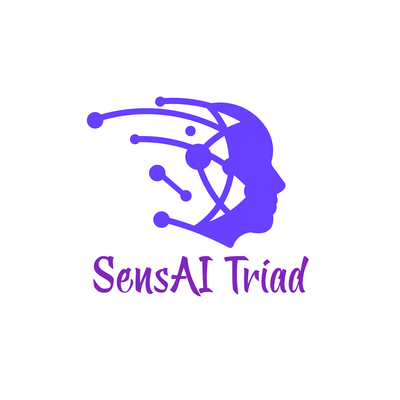You’ve felt it. That moment of hesitation when your finger hovers over the keyboard, wondering if what you’re about to write will sound “too AI” or “not human enough.”
It’s the new writer’s block of our generation. Not the struggle to find words, but the fear of finding the wrong ones – ones that might trigger an AI tools for detecting AI generated content or make readers question your humanity.
This fear is reshaping how we write, often without us even realizing it.
The Hidden Tax on Your Creativity
When you write defensively against AI detection, you’re paying a creativity tax you never signed up for.
You avoid certain phrases that flow naturally. You second-guess word choices. You deliberately introduce imperfections or quirks that don’t serve your message.
“The psychological impact of AI detection tools on writers can be profound, creating anxiety and self-doubt,” notes research from BBN Times. “Many writers find themselves altering their natural writing patterns just to avoid being flagged.”
This defensive writing creates a paradox: in trying to sound more human, your writing becomes less authentic.
The most human writing comes from not thinking about how human your writing sounds.
The False Binary of AI vs Human Writing
At Writers Without Walls, we’ve watched this tension play out in real time. Our founder, James “JD” Armstrong, sees it clearly:
“AI will never be able to fully replicate human writing. Because humans are unpredictable, we are passionate, very emotive. We break rules, writing rules, for effect.”
The truth is, there’s no binary choice between “AI writing” and “human writing.” There’s just writing – some good, some bad, some authentic, some formulaic.
The question isn’t whether AI is involved, but whether the writing serves its purpose and connects with readers.
Writers who thrive will be those who see AI as a collaborator rather than a replacement or threat.
The Authenticity Paradox
Have you noticed how trying too hard to sound human often makes writing feel less human?
It’s like someone telling you to “act natural” – immediately, you become self-conscious and do the opposite.
The same happens when you write with AI detection tools looking over your shoulder. You introduce awkward phrasings and unnatural cadences that a human writer would never naturally create.
Research shows AI detection tools frequently misclassify human-written content as AI-generated, creating a vicious cycle of self-doubt and second-guessing for writers who are just trying to express themselves authentically.
In the development of our AI tools, JD tested other tools extensively. He got the AI detection tools to classify a short article, completely written by AI, as likely to be human written. He also tested out some plagiarism tools that flagged his article as 100% plagiarized, citing his own article as the source.
Supporting Writers, Not Replacing Them
The future belongs to tools that enhance human creativity rather than attempting to replicate it.
This is the philosophy behind the SensAI Triad developed at Writers Without Walls – tools like StorySensAI that analyze and provide feedback on your writing without trying to write for you.
“My AI tools don’t keep the writers stories. They don’t use their data. They don’t train off their data at all,” explains Armstrong. “As a writer, I want my stories protected as well. So that’s how I built it.”
StorySensAI assesses stories across 23 different points, providing scores and constructive feedback without the emotional bias of friends or the harshness of online critics.
It’s designed to be “borderline harsh critic but also supportive and gives you that constructive criticism.”

The Writing Tool Spectrum
Not all AI writing tools are created equal. They exist on a spectrum:
At one end are tools that try to replace writers entirely – the ones where you input a prompt and get a fully-written article or story.
At the other end are tools that support and enhance your existing writing process – providing feedback, helping with research, or offering suggestions when you’re stuck.
The first category gets all the attention, but the second category is where the real revolution is happening for serious writers.
The distinction matters because it determines whether you’re outsourcing your voice or amplifying it.
The Future Is Collaborative
The adoption of AI in writing will likely follow the pattern of previous technologies. Armstrong draws a compelling parallel:
“When eBooks became available, so many writers were adamant that they’d never ever publish their book as an eBook. And there was a lot of resistance to that. And now it’s just commonplace.”
The same will happen with AI writing tools. Initial resistance will give way to thoughtful integration.
“Writers using AI effectively will develop new capabilities. Those who choose not to use AI may find themselves pushed to elevate their craft in response – AI’s advancement creates a healthy competition that can drive all writers to reach new heights, regardless of which tools they choose.”
But this doesn’t mean surrendering your voice to algorithms. It means using AI as a collaborator that handles the mechanical aspects of writing so you can focus on what humans do best: bringing emotion, perspective, and unpredictable creativity.
Protecting the Trust Between Writers and Readers
The relationship between writers and readers is sacred. It’s built on trust – trust that the voice on the page is authentic, even if it’s been polished and refined.
Armstrong warns about the dangers of breaking this trust: “One day, there’s gonna be the next Harry Potter series written by someone, and that person becomes famous… And it’ll be revealed that the writer didn’t write any of it, and it was all done completely by AI. The backlash from the fans will be huge. And rightly so.”
This is why transparency matters. Not because using AI tools is wrong, but because misrepresenting how your work was created undermines the foundation of storytelling itself.
Research on human-AI collaboration shows writers develop fluid relationships with AI that shift based on their goals and needs. The key is being honest about that relationship with yourself and your audience.
Finding Your Balance
How do you find the right balance with AI tools in your writing process?
Armstrong offers this advice: “Like any tool that we use, it’s how we use it that matters. If you use a tool for nefarious purposes, then you’re gonna have nefarious results. If you go in with good intent, if you go in with a clear mind of what you want to achieve with the tool, you will achieve the outcome that you want.”
Start by defining what aspects of writing you find most challenging or time-consuming. Those are the areas where AI assistance might be most valuable.
Keep the aspects that bring you joy and fulfillment firmly in your own hands.
Experiment with different tools and approaches. Some might feel like a natural extension of your process, while others might feel intrusive or limiting.
Most importantly, remove ego from the equation. See feedback – whether from AI tools or human readers – as valuable data rather than personal criticism.
The Writer’s Path Forward
The future of writing isn’t about choosing between human creativity and AI efficiency. It’s about thoughtfully integrating both.
The writers who thrive will be those who maintain their authentic voice while leveraging AI tools to enhance rather than replace their creativity.
They’ll use AI to overcome writer’s block, research efficiently, and receive objective feedback – but they’ll keep the soul of their writing firmly in human hands.
They’ll approach AI with curiosity rather than fear, seeing it as one more tool in a long history of writing technologies from the printing press to word processors.
And they’ll remember that at its core, writing has always been about one human mind connecting with another – a connection no algorithm can fully replicate.
Your voice matters. Don’t let fear of AI detection shape it into something it’s not.
Written by James “JD” Armstrong
Founder, Writers Without Walls




Leave a Reply